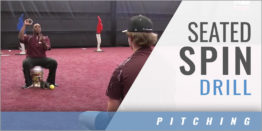|
By: John Klessinger Originally Published in: A Coach's Manual Provided by: Championship Productions "If you expect people to follow you, you have to be willing to be the first to get dirty." - John Klessinger People write entire books on leadership. I am attempting to give my take on leadership in a couple of pages. For most of my career, I have followed the premise that leadership starts in the front. Like the quote above, leadership is being the first person to get their hands dirty. It is modeling the traits you want to see in your players. If you want them to work hard, you have to do it first. If you want them committed, you have to demonstrate to them what commitment looks like by your preseason, in-season, and off-season willingness to build your program. Leadership is setting the example for your team. It is doing the things that you want in your players. It is the first to arrive, the last to leave, and doing the extra stuff to be successful. How do you develop and learn to be an effective leader? The main ingredient of learning leadership is modeling people who demonstrate leadership qualities you would like to have in yourself. Watch them interact with their players. Study their sideline behavior and adopt them as your own. If you don't have access to them, find them on the internet, listen to interviews, or buy a book by a very successful coach. I have read books by Bill Walsh, John Wooden, Bill Parcells, Bear Bryant, and more. You have to learn all you can and assimilate their theories and philosophy into your coaching. Another aspect of leadership is your day to day interaction and communication with your players. I do not yell a lot at my players. I have a strong belief that yelling isn't useful in motivating or leading a team. I understand that in some cultures of sport; yelling is the norm. It is not how I work with my team. On rare occasions, I may yell for effect to rattle them, but I often speak confidently and sternly to my players in a calm manner. I may raise my voice to get the point across or motivate an athlete during a challenging practice or workout, but never in a demeaning tone or style. Machiavelli said, "it is better to be feared than loved if you cannot have both." The "if you cannot have both" is almost always omitted and forgotten. Often is it mistaken by coaches that having your players fear you is better than them loving you. A healthy level of fear is good and creates a level of alertness in your team. If they fear consequences for negative behaviors, they will perform less of them. If there is no fear, then it comes back to the accountability system you created. A player or person that sees no consequence for negative behaviors will continue doing negative behaviors. It is that simple. A coach that is loved will get the most out of their players over the long haul. They will work hard for their coach and respect him/her. Your players love you when you first love them. You show them that you care and are in the fight with them. A coach can be critical but encouraging at the same time. It is a balancing act between the right amount of love and fear. Help them, hold them accountable, praise them, and correct them. Your players will come to expect from you what you demonstrate to them consistently. If you are always demanding and arrogant, that is what they will expect. The reverse is also true. If you are hard on them but show you are there for them, that's what they will expect. Furthermore, most of your parents will buy into whatever you do if they feel you care about their child. You will earn respect with consistent behavior. Erratic and temperamental people lose trust and respect. I think an occasional outburst like stated previously can be useful. A calculated eruption will take your players out of their comfort zone and send a direct message. But if it is too often, erratic, and random, it can do the opposite and develop opposition and discontent. You can follow an outburst with a positive "post-outburst" discussion to build rapport and morale. Leadership is a learned skill that you develop by modeling and studying the best practices from other successful coaches and people in leadership positions. Observe, learn, and implement the leadership traits into your coaching. It will take work and some trial and error. Leadership is always evolving, and as you continue to grow, you will become a more effective and confident leader. |






